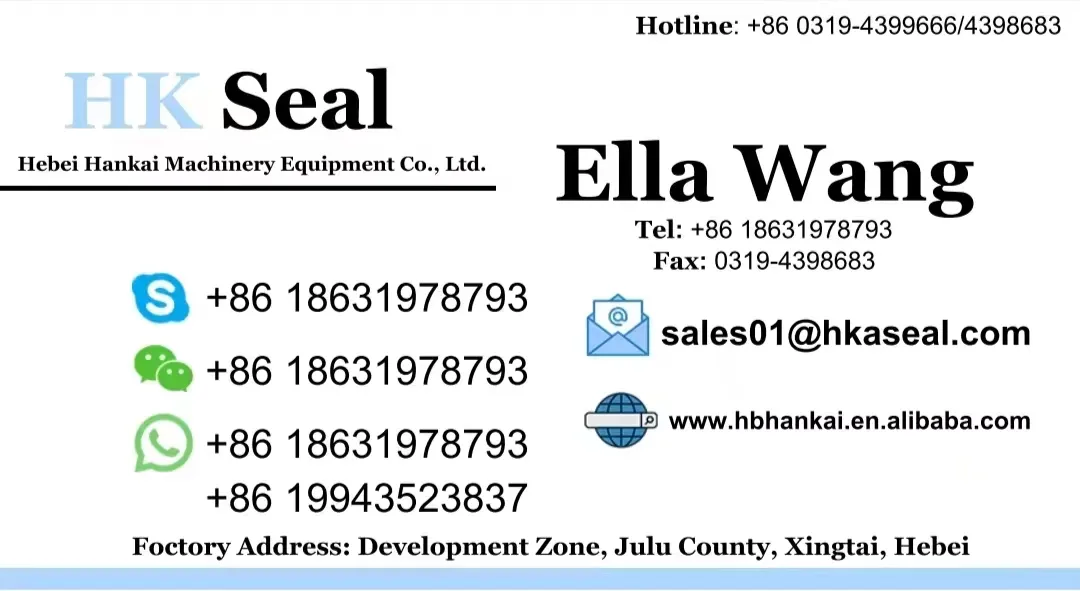des . 18, 2024 00:26 Back to list
35x52x7 oil seal
Understanding the Importance of the 35x52x7 Oil Seal in Mechanical Applications
Oil seals are essential components in various mechanical systems, serving as barriers that retain lubricants, keep contaminants out, and maintain hydraulic pressure. Among the myriad of oil seals available, the 35x52x7 oil seal stands out due to its specific dimensions and applications, making it a critical part in multiple industries.
What is an Oil Seal?
An oil seal is a mechanical seal designed to retain oil in machinery and prevent leakage. It plays a pivotal role in ensuring the longevity and efficiency of machinery by minimizing lubricant loss and protecting sensitive components from dirt and moisture. The design of an oil seal typically includes several key features, including a sealing lip, a metal casing, and sometimes an outer flange for additional stability.
Dimensions and Specifications
The designation 35x52x7 refers to the dimensions of the oil seal in millimeters. Here is the breakdown
- 35 mm - This is the inner diameter (ID) of the seal, indicating the size of the shaft the seal will fit onto. - 52 mm - This is the outer diameter (OD) of the seal, which defines how large the seal can be utilized in a housing. - 7 mm - This represents the thickness of the seal, crucial in determining how well the seal will fit into the designated groove.
These dimensions make the 35x52x7 oil seal suitable for various applications, particularly in automotive and industrial machinery.
Applications of 35x52x7 Oil Seal
The versatility of the 35x52x7 oil seal allows it to be utilized in different settings, including
1. Automotive In vehicles, oil seals are commonly found around engine blocks, transmissions, and differentials. The 35x52x7 oil seal is crucial for preventing leaks in critical systems, maintaining the necessary lubrication to minimize wear and tear.
35x52x7 oil seal

2. Industrial Machinery Equipment such as pumps, motors, and gearboxes rely on oil seals to ensure that lubricants stay contained, preventing premature failure and breakdown. An oil seal of this dimension can effectively seal around shafts in medium-sized machinery.
3. Agricultural Equipment Tractors and harvesters that require robust sealing solutions often utilize oil seals like the 35x52x7 to cope with harsh environments, where dirt and moisture can lead to significant maintenance issues if not effectively managed.
4. Marine Applications In marine equipment, where exposure to water and other elements is frequent, oil seals are critical in protecting internal components. The 35x52x7 seal helps provide a reliable barrier against the harsh marine environment.
Material Choices
Oil seals can be made from various materials, including rubber, silicone, and fluoropolymer compounds, each offering different properties suitable for specific conditions. The choice of material affects the seal's resistance to temperature, chemical exposure, and wear. For the 35x52x7 oil seal, common materials include
- Nitrile Rubber (NBR) Known for its resistance to oil and fuel, NBR is frequently used in environments where petroleum-based products are present. - Fluorocarbon (FKM) This material provides superior resistance to heat and chemical degradation, making it suitable for more demanding applications.
- Silicone While not as resistant to abrasion as NBR or FKM, silicone seals perform well in extreme temperatures, making them ideal for specific applications.
Importance of Proper Installation
The efficiency and longevity of a 35x52x7 oil seal greatly depend on its proper installation. Incorrect installation can lead to premature failure, resulting in leakage and potential damage to surrounding components. It is crucial to follow the manufacturer’s guidelines during installation, ensuring that the seal is seated properly and that all around features, such as grooves or flanges, are adequately prepared.
Conclusion
In conclusion, the 35x52x7 oil seal is a vital component across various mechanical systems, providing effective sealing solutions that ensure performance and longevity. Understanding the specifications, suitable applications, and proper installation practices for this oil seal empowers engineers and technicians to make informed decisions, thereby enhancing the reliability of machinery and reducing maintenance costs. As industries continue to evolve, the importance of such discrete, yet crucial components, will only grow, highlighting the need for ongoing innovation and improvement in sealing technologies.
-
TCN Oil Seal Metal Ring Reinforcement for Heavy Machinery
NewsJul.25,2025
-
Rotary Lip Seal Spring-Loaded Design for High-Speed Applications
NewsJul.25,2025
-
Hydraulic Cylinder Seals Polyurethane Material for High-Impact Jobs
NewsJul.25,2025
-
High Pressure Oil Seal Polyurethane Coating Wear Resistance
NewsJul.25,2025
-
Dust Proof Seal Double Lip Design for Construction Equipment
NewsJul.25,2025
-
Hub Seal Polyurethane Wear Resistance in Agricultural Vehicles
NewsJul.25,2025
-
The Trans-formative Journey of Wheel Hub Oil Seals
NewsJun.06,2025
Products categories
















